The Bicycle Transportation Alliance’s campaign to get walking and biking education and infrastructure to public schools across the Portland metro area got two strong boosts this month.
In successive unanimous council resolutions, the suburban cities of Milwaukie and Tigard voted on March 17 and 24 to ask the Metro regional government to dedicate funding to programs like the ones currently enjoyed by many Portland elementary and middle schools.
“Our goal is for Tigard to be the most walkable community in the Pacific Northwest where people of all ages and abilities live healthy, interconnected lives,” Tigard Mayor John Cook said in a BTA news release. “Providing a safe route to school for every kid is essential to the health and safety of our community.”
Various Milwaukie and Tigard residents had more to say in the BTA’s release:
Research shows that kids who most need opportunities for physical activity don’t have the necessary safe infrastructure—sidewalks, crosswalks, bike lanes—in their neighborhoods and around their schools to support a healthy childhood.
In Clackamas and Washington Counties, more than 70% of 8th graders are not getting the recommended amount of physical activity according to the 2013 Oregon Healthy Teens Survey. Lack of physical activity is a leading contributing factor for obesity, diabetes and heart disease—a problem for Oregon, where one in four kids is overweight or obese.
The proposed region-wide Safe Routes to School initiative — “For Every Kid” — represents a chance to address these problems. Walking or biking to school can help kids meet over half of their daily recommended physical activity, and public transportation users have been shown to get three times as much physical activity.
“We need sidewalks and a more visible crosswalk,” said Ane Roth, Milwaukie resident, Linwood PTA representative, and mother of two boys. “My kids and many more could walk and bike if the street in front of the school was safer.”
Advertisement
Roth and other Linwood parents have been working for the last year to increase walking and biking to school by leading encouragement activities, however, the streets are not safe for every child to participate.
School surveys show that at least 60% of students at Linwood want to walk and bike to school, but parents don’t allow it because the streets need sidewalks and other safety features. Instead, about half of students are driven to school. This is greater than the percentage who ride the school bus and significantly more than walk and bike according to surveys. Parents identify the major reason why they want their children to walk and bike is to increase their child’s health.
“Childhood obesity is a reality for far too many children in our community while many neighborhood streets lack sidewalks,” said David Lord, teacher at Metzger Elementary in Tigard. “With regular exercise, students are more attentive in class. Kids need safe streets to be able to get around and to learn about how to walk and bike safely.”
This call by the cities of Milwaukie and Tigard is part of growing demand across the region for safer neighborhood streets that support healthy communities, but funding for such projects is limited.
This fall, Metro Councilors will have the opportunity to allocate funding to make safe routes to school for every student in the Metro area. Creating dedicated funding would ensure the safety and health of our kids, families, and communities.
The BTA says that education throughout the metro area would cost about $28 million a year, or $375 per student: $2.7 million for education and encouragement, the rest for transit access, street improvements and needs assessments. They’ve drafted a policy document that breaks out the various costs and possible funding sources.


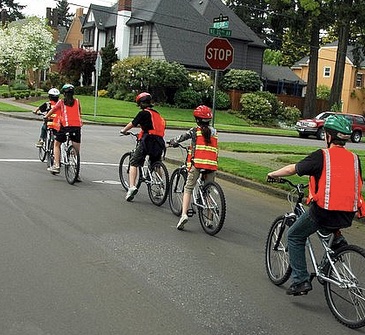
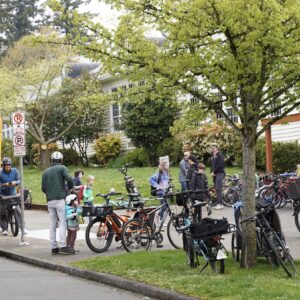
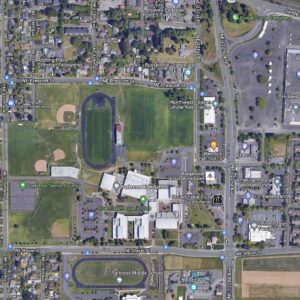
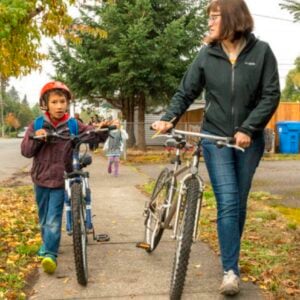
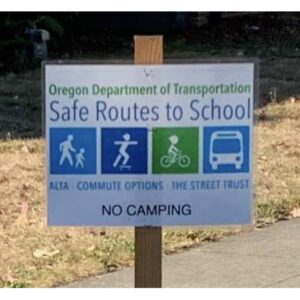
Thanks for reading.
BikePortland has served this community with independent community journalism since 2005. We rely on subscriptions from readers like you to survive. Your financial support is vital in keeping this valuable resource alive and well.
Please subscribe today to strengthen and expand our work.
I love that 7 council members voted against it. Apparently they hate children? Or maybe they love really fat children?
The article states that both council votes were unanimous. Are you subtracting the dates the votes took place to arrive at the number 7?
Well, I can’t read, apparently, but at least I can still do math.
Linwood and Metzger are nice neighborhoods, and not all that old.
Why were they developed without sidewalks?
Some areas nearby had farm land. Metzger, Garden Home, Raleigh Hills, Cedar Hills, and West Slope are all in unincorporated Washington County. No city council.
I’ve done this route a few times before. I recommend doing it the reverse direction that Johnathan did. The gradient up Bacona Rd is much better than climbing dutch canyon. Going down dutch canyon is great… Here is a route in that direction with additional cues so you don’t get lost: http://ridewithgps.com/routes/3967758
whoops. that comment wasn’t meant for this article.
take those vests off kids! and get out of single file!
Sorry, Tigard, but I’m going to have to call BS on you.
I’ve been asking for 15 years for sidewalks, bike lanes, or at the very least a shoulder to be installed on 121st between Walnut and Gaarde. Tigard has always said, “it’s in our five-year plan for that area” but I guess it’s a rolling five-year plan as there’s never been any movement on it. 121st is a 35mph straight stretch here, and even though it’s rated as a collector, the amount of traffic I see on it aims it squarely towards arterial.
I’ve asked for signs on 121st warning drivers to be aware of cyclists and pedestrians in the roadway, and again, “it’s in our five-year plan”.
The neighborhoods in this gap are within 1 mile of Fowler Middle School, and yet none of the school kids can get to the school without risking their lives.
All of my neighbors are aghast that I ride my bike on 121st and Fonner St because I have to ride in the traffic lane– but I have to, as otherwise I cannot get to my house.
And as an example of going backwards: City officials decided to turn most of the bike lane on Tiedeman into a parking lane “because people were parking there anyway”. They also got rid of the bike lane that was on one side of the street on the East side of the Fanno Creek bridge and installed variable width non-shoulders on both sides “for the pedestrians”. The width varies wildly along this length, from a couple of feet down to I can’t even stand in the gap between the paint and the edge of the road.
These are just two examples closest to my house. There are a lot of gaps in the sidewalk and bike lane network. Tigard needs to stop waiting for developers to come in and create subdivisions and start filling those gaps on their own.